Compose and publish your map¶
With your layers styled and edited, you are at last ready to compose and publish your map. Map composition involves loading all the layers you wish to publish, determining layer order, and determining map extent and positioning. Once this is accomplished, you can save your map in a format that makes it easy to embed in any web page.
Map composition¶
Make sure all of the layers that you wish to include in your map are loaded in the Layers Panel. This can include local GeoServer layers, remote WMS layers, and other hosted services such as MapQuest or Google.
In the Layers Panel, click and drag the layers up and down to adjust rendering order. The layers that are on the top of the list will be drawn last (and thus “on top” of the other layers).
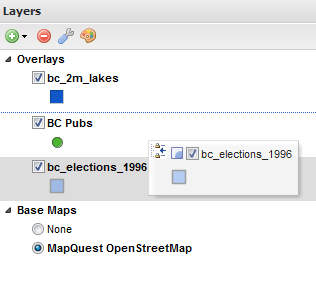
Drag layers to reorder
Use the zoom and pan tools to set the default map view.
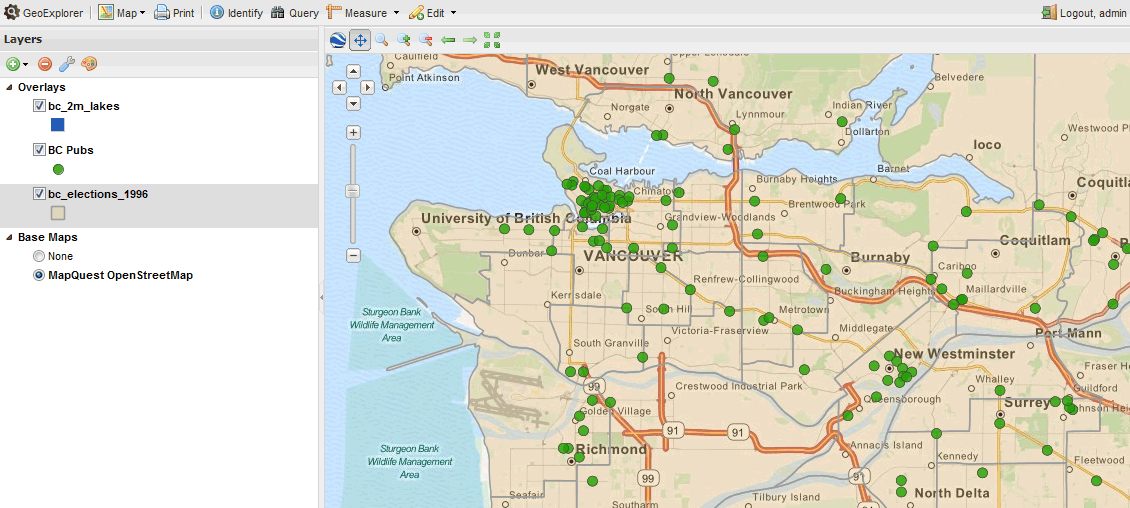
A finished map
Save the map view¶
You can save your map composition for later, to be accessed by a URL bookmark.
Click Map on the GeoExplorer toolbar and click Save map to generate a URL.
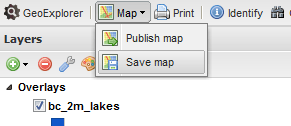
The Save map tool will generate a URL
When navigating to this URL at a later time, the map will return to this exact placement.

Copy this URL to save your map
Publish via embedded map¶
GeoExplorer allows you to publish your map view by generating a small block of HTML code that can be embedded in any web page.
Click Map on the GeoExplorer toolbar and click Publish map.
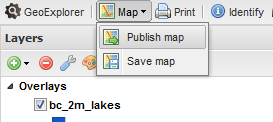
The Publish map tool will generate HTML
Choose the tools you would like to have available in your embedded map:
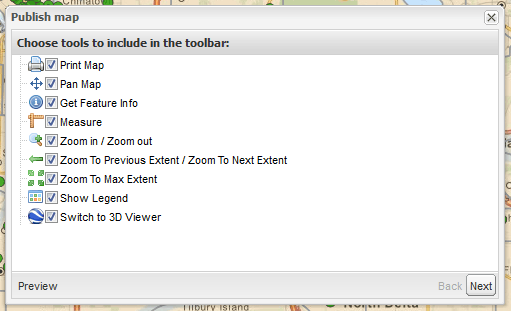
Selecting the tools for the published map
A dialog box will show some HTML code that can be copied and included in a web page in order to embed the map. You can change the values for the map size in the Map Size list, or by changing the Height and Width values. The changes will automatically be reflected in the HTML.
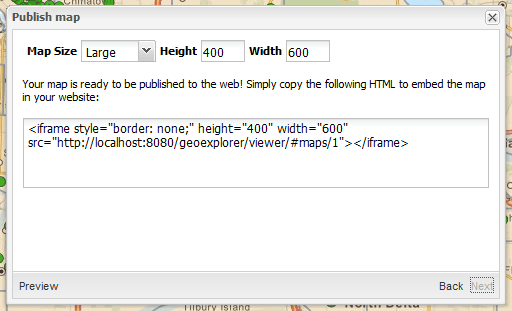
HTML for embedding a map
Copy and paste this code into any web page or HTML-source to embed your map.
To try this out create a file
sample.html:<html> <head> <title>GeoExplorer Sample</title> </head> <body> <h1>Sample</h1> <p> Sample of an embedded GeoExplorer map. </p> <!-- iframe snippet goes here --> </body>
Note
URLs that contain “localhost” will not be accessible to anyone other than those on the local machine. Please deploy the OpenGeo Suite onto a server with a web-accessible URL if you would like to share this map beyond your local system. The System administration section has more information about deployment.